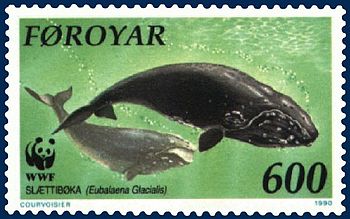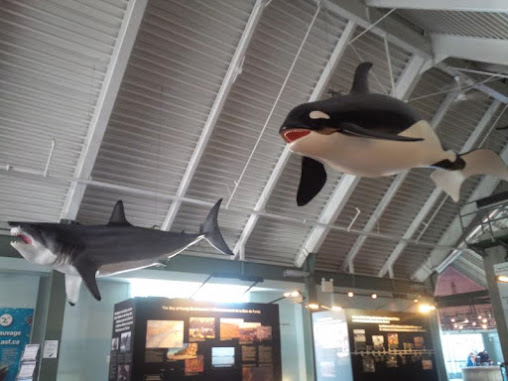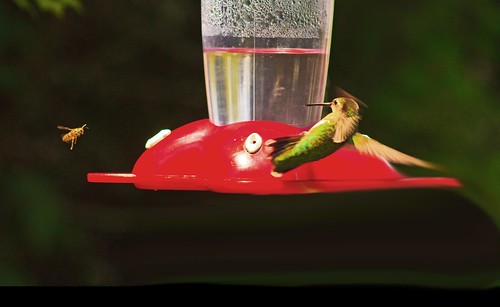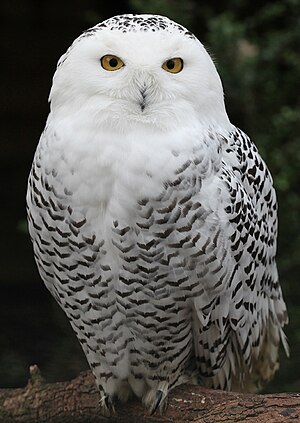 |
| North Atlantic Right Whale on a Faroese stamp (Photo credit: Wikipedia) |
The authors of the following article are pleased to announce a new paper
providing evidence that speed restrictions implemented in 2008 to reduce
vessel related deaths of North Atlantic right whales along the East
Coast of the United States have been effective.
Laist, D.W, A.R. Knowlton, and D. Pendleton. 2014. Effectiveness of
mandatory vessel speed limits for protecting North Atlantic right
whales. Endangered Species Research 23(2): 133-147.
http://www.int-res.com/articles/esr_oa/n023p133.pdf
ABSTRACT: To reduce right whale /Eubalaena glacialis/ deaths caused by
ship collisions along the US East Coast, a rule was implemented on 8 December 2008 requiring all
vessels ≥65 feet (19.8 m) to travel 10 knots (18.5 km h−1) or less in 10 seasonal management areas
(SMAs). To evaluate the effectiveness of this rule, we plotted the locations of all right whale
and humpback whale /Megaptera novaeangliae/ carcasses attributed to ship-strikes since
December 1990 in US waters to determine their proximity to SMAs. In the 18 yr pre-rule period, 13 of
15 (87%) right whales and 12 of 26 (46%) humpback whales killed by ships were found inside later
SMA boundaries or within 45 nmi (83 km) of their perimeters during later active dates. In
the first 5 yr after the rule became effective, no ship-struck right whales were found inside or
within 45 nmi of any active
SMA. This was nearly twice as long as the longest pre-rule period
without discovery of a ship-struck carcass in those areas during effective time periods. Based on the 18 yr
pre-rule period, bootstrap resampling analyses revealed that the probability of finding no
ship-struck whales in or near SMAs during the first 5 yr post-rule period would be a statistically
significant reduction in such deaths (p = 0.031). The results suggest the rule has been effective at
reducing right whale deaths.
We suggest enlarging SMAs to include additional parts of the right whale
migratory corridor.
 In the World?
In the World?
 true daddy longlegs live in moist, dark places and eat mostly decomposing vegetable and
true daddy longlegs live in moist, dark places and eat mostly decomposing vegetable and






















